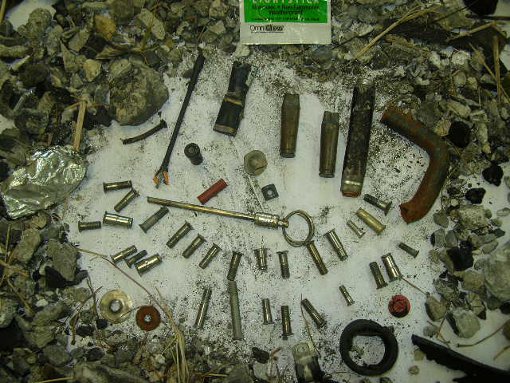What Is FOD?
FOD is an important safety and quality control concept in Aviation, Aerospace, Manufacturing, Motorsport, Shipping, Military or similar environments where small debris, loose objects, wildlife and even stray humans have the potential to cause:
-
damage to manufactured equipment;
-
injury to employees, visitors or passengers;
-
production delays or safety violations.
Depending upon the context, there are two interrelated “FOD” (or F.O.D.) meanings::
-
Foreign Object Debris
-
Foreign Object Damage
Efforts to prevent Foreign Object Damage are collectively referred to as FOD Prevention Programs or FOE (F.O.E.) Foreign Object Elimination.
Suggested Resources
Check out some of our other articles on:
- How to prevent FOD at your airport
- How to set up a FOD Program at your airline
- How to protect Military environments from FOD
- Eliminating FOD in your factory
Download Our Free Booklet
What is Foreign Object Debris?
Foreign Object Debris is any object, particle, substance, debris or agent that is not where it is supposed to be, and:
- FOD in aviation or a similar environment could create a hazard to aircraft, equipment, cargo, personnel or anything else of value.
- In a manufacturing or similar environment, could contaminate the product or otherwise undermine quality control standards, or injure personnel.

Foreign object debris examples include:
- Tools, parts and loose hardware
- Building materials
- Paper, paper clips, pens, coins and badges
- Fragments of broken pavement
- Trash, food wrappers and beverage containers
- Rocks, sand and loose vegetation
- Baggage tags and pieces of luggage
- Hats, rags and gloves
- Birds, wildlife and stray animals
- Volcanic ash
- Humans
Yes, even people can become debris, if they are in the wrong place at the wrong time. For instance, there are documented instances of humans getting sucked into aircraft engines.
What is Foreign Object Damage?
Foreign Object Damage is damage caused by Foreign Object Debris that compromises the quality, functionality or economic value of a manufactured item. For instance, a piece of FOD at the wrong place at the wrong time can:
- Shred fan blades when sucked into a turbojet
- Blow out tires at high speeds
- Damage delicate components when trapped inside of an equipment housing
- Freeze control mechanisms when lodged next to levers and handles
While hard numbers are difficult to come by, it has been estimated that FOD costs the civilian aviation sector between $4 billion and $13 billion annually in damaged equipment, flight delays, reduced efficiency, litigation and other costs.
FOD also has the potential to injure employees, passengers, factory workers and others. In addition, FOD in military environments can affect national security, reducing air defense and other mission capabilities.
Serious foreign object damage examples include:
- The July, 2000 crash of Air France Flight 4590 near Paris, France. A strip of titanium had fallen off the engine cowl of another airliner, landing on the runway. Minutes later, the strip shattered one of 4590’s tires during takeoff, which in turn ruptured a fuel tank. 113 people died, with litigation and criminal prosecution lasting for years afterward.
- The January, 2009 crash of US Airways flight 1549 into the Hudson River in New York. Shortly after takeoff, a flight of Canadian Geese collided with the airliner, shutting down both engines. The pilot, who had also trained as a glider pilot, successfully ditched the plane into the river, with five serious injuries and, miraculously, no fatalities.
Trying to decide which type of runway / ramp sweeper is best for your airfield? Read our white paper or complete this technical assessment form, then we’ll be happy to make some recommendations.
Who uses the term?
The acronym “FOD” is most often used in the aviation and aerospace sectors. Other industries might use different terms such as “contamination” when referring to similar concepts. Alternative set of FOD definitions that you’ll likely run across include:
- Foreign Object Debris: A substance, debris or article alien to a vehicle or system which would potentially cause damage.
- Foreign Object Damage: Damage attributed to a foreign object that can be expressed in physical or economic terms which may or may not degrade the product’s required safety and/or performance characteristics.
Regardless of what you call it, FOD is a serious concern in any manufacturing or operational environment where safety and quality assurance requires that everything should be in its proper place.
Examples of equipment used to combat FOD
- Airfield/Facility FOD razor sweepers, which periodically clean runways, taxiways, ramps, aprons, raceways and parking areas of small debris.
- “FOD Containers” and “FOD Bags”, for safe disposal and (when appropriate) OSHA-compliant containers for the temporary storage of found debris.
- Tool and parts kitting, which allows technicians to keep track of small objects during on-site installation and repair jobs.
- Specially-designed clothing and footwear to prevent ripping, tearing, snagging and carried debris in FOD-sensitive work areas.
- Aircraft and wheel covers to protect equipment from rain, wind, dust and other environmental hazards.
- FOD detection systems, usually consisting of radar- or camera-based, which automatically scan runways for the presence of debris or wildlife.
Manufacturing, Warehouse and Automotive Facilities
You don’t have to be an airport to have FOD issues! We also provide technical assistance and product solutions to non-aviation facilities, such as manufacturing plants, repair shops, speedways and automotive proving grounds, where debris control is a critical safety, quality control or compliance issue.
- Browse our industry specific resources for your type of facility.
- View this infographic on prevention processes in factory and warehouse settings.
- Learn more about cleanrooms in this white paper.
Sources for more information
Advisory Circulars…
…from the the U.S. Federal Aviation Administration deal with FOD prevention and control standards at the nation’s civilian airports:
- AC 150/5210-24, Airport Foreign Object Debris (FOD) Management, which provides FOD program guidance and equipment specifications for airport managers;
- AC 150/5220-24, Foreign Object Debris Detection Equipment, similarly discusses automated, high-tech equipment that uses radar, imaging and other systems to scan runways for debris;
- AC 150/5200-18, Airport Safety Self-inspection, which includes items that should be included in these inspections;
- AC 150/5200-37, Introduction to Safety Management Systems (SMS) for Airport Operators, an organized system of assessing and mitigating risk.
- AC 150/5380-6, Guidelines and Procedures for Maintenance of Airport Pavements, which is self-explanatory.
NAS 412…
…is an industry standard issued by the Aerospace Industries Association (AIA) which:
- establishes general practices and standard terms for the prevention of Foreign Object Damage (FOD) to aerospace products and operating environments;
- provides guidance for the prevention of Foreign Object Damage to aerospace products being designed, developed, manufactured, assembled, operated, repaired, modified, refurbished and maintained;
- is designed to reduce the risk from Foreign Objects /Foreign Object Debris to products or systems through the elimination of foreign objects
A FOD Advisory Board is composed of representatives from the AIA and other Private / Public sector organizations help manage and update the standard as necessary.
AS9146…
…is a new industry standard published by the Americas Aerospace Quality Standards Committee (AAQSC) which defines FOD Prevention Program requirements for organizations that:
- design, develop, and provide aviation, space, and defense products and services;
- provide post-delivery support, including the provision of maintenance, spare parts, or materials for their own products and services.
The AAQSC is affiliated with the Americas Aerospace Quality Group (AAQG), which is a member of the SAE Industry Technologies Consortia and a Sector within the International Aerospace Quality Group (IAQG).
Have Questions? Want to learn more? Contact us for help in setting up your FOD prevention program.

